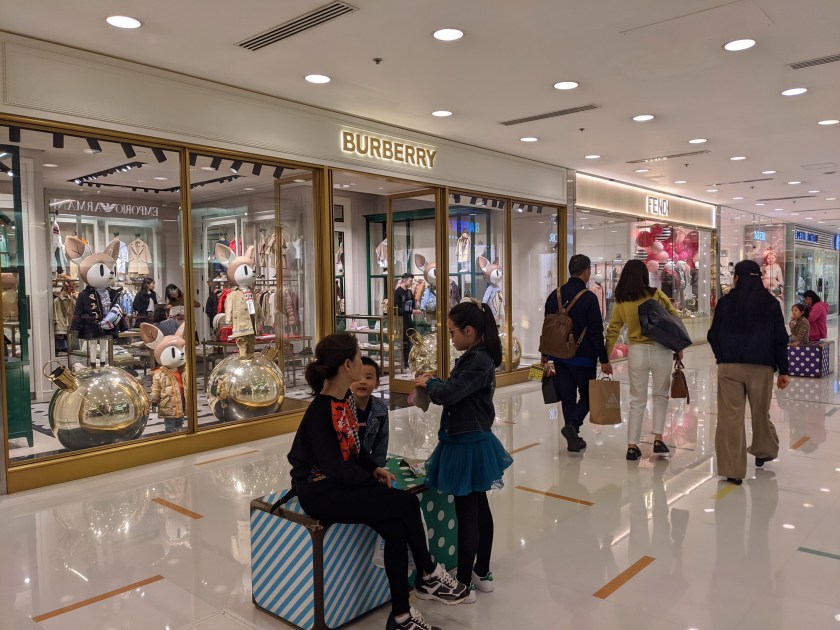We were more than a little worried about beginning our latest trip in Hong Kong. From news reports, it sounded like the city was a battleground with fire-bombed subway stations, tear gas, and streets lined with riot police. The airport had even been shutdown by protests — would our flight be able to land? Stepping off the plane, we saw a different reality. The airport was its usual modern and efficient self. The city also seemed to be humming along as usual. During our three days in Hong Kong, our Fitbits say we walked 20 miles and the only clear sign of unrest that we saw was some anti-government graffiti.

We don’t know to what extend the calm that we saw reflected our limited view of the city, or whether it is a sign that the protests are fizzling out under the relentless suppression by the government, or whether the extent of the unrest has been overblown by the media. Probably all of those were a factor.
Tourism is down because of the preception and/or reality of the unrest which is a shame because Hong Kong is still a great destination. It is such an interestingly layered city, almost like an archeological dig showing differnet stages of its development, all still present and bustling. Look in one direction and it is hyper-modern Dubai; in another direction an alleyway could be in pre-industrial China; in another, Victorian England. Add in the modern infrastructure and ubiquitous English and it is a pleasure to visit.
Hong Kong has always been a shopping destination but one change we’ve noticed since our last visit is the explosion of extreme luxury stores. Every major European fashion designer has multiple stores, many bigger than you’d find on Rodeo Drive or Fifth Avenue. We were in one large mall where Laurel looked around slack-jawed and said “There isn’t an item in any of these stores that would sell for under $1000.” One whole wing of another mall was devoted to high fashion for children. Who even knew that Gucci made children’s clothes?

But we weren’t shopping for couture and had seen a lot of multi-cultural urban wonders on past visits, so we focused a lot of our time walking to the major parks in the city. It is fun to be walking through a dense urban jungle and come across a real tropical jungle. Well, “jungle” is perhap not quite the right word since the plants are mostly kept tidily in their place surrounded by an equal amount of pavement. The wildlife sounds are mostly from caged birds and monkeys. But the parks were still surprisingly lush and the animals housed in surprisingly humane conditions. Two of the parks had aviaries with an assortment of tropical birds in generously sized cages that allowed the birds to fly and flock. Hong Kong Park had the most impressive aviary. Instead of a cage, an entire forested valley was enclosed by a giant net. An elevated boardwalk runs through the forest, which covers almost an acre. Hundreds of beautiful birds were roosting in the trees or going about their business. We had a lot of fun spotting the different species, some of whom were not the slightest bit shy.

Among U.S. foodies there is a cult of finding the “most authentic” Chinese restaurant. We love Chinese food but some of our past experiences with truly authentic Chinese food in China has left us wary of the real thing. We just aren’t accustomed to some of the animals or parts of animals that find their way into the dishes. But we were determined to have a great “real” Chinese meal so we found a well reviewed Szechuan restaurant near an aviary we were visiting. Luckily the restaurant’s menu had English names for the dishes but they were cryptically sparse, like “Sliced frog,” “Double boiled pig lung” and “Chilled goose intestine.” About five pages into the menu we spotted the first item that we recognized as clearly palatable: kung pao chicken, one of our favorite dishes back home. Call us unadventurous, but that is what we ordered. We were relieved when there were no nasty surprise ingredients and we enjoyed the meal.




































